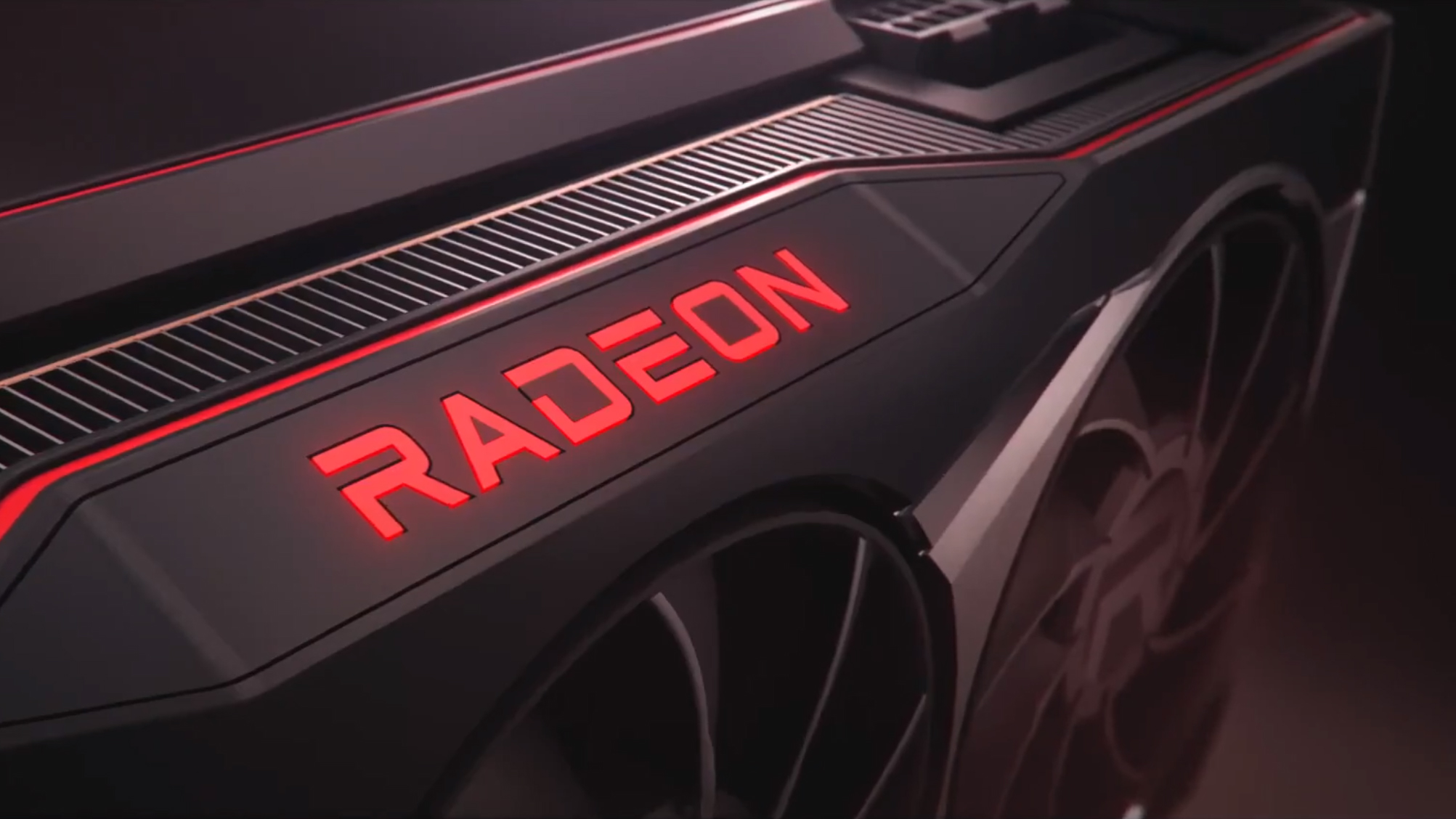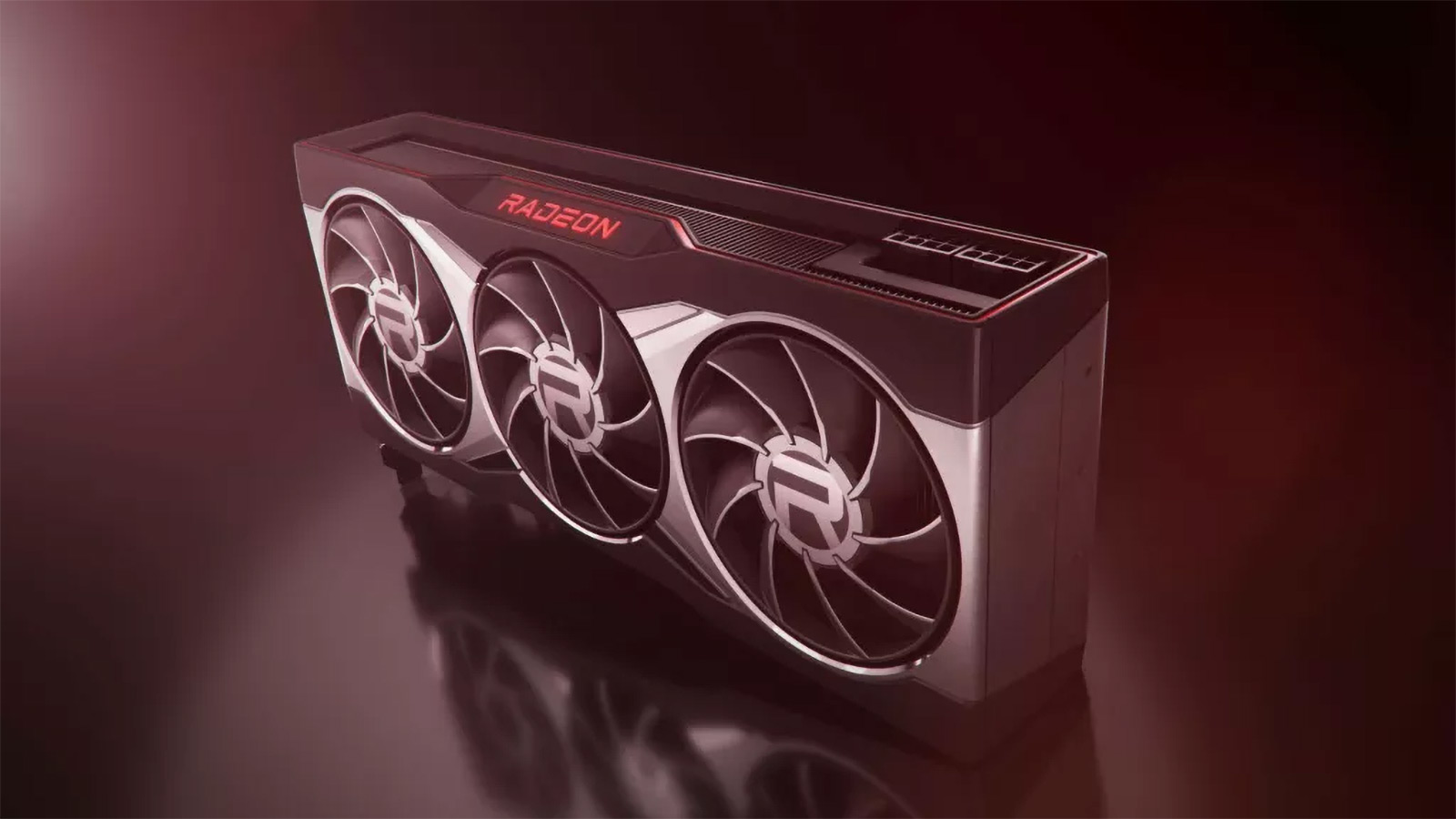AMD RDNA 3 will soon be upon us now that it’s been over a year since AMD introduced its RDNA 2, or Big Navi, graphics architecture design with the Radeon RX 6000 series graphics cards. The 6000-series successor is nearly due, going by AMD's typical product cadence, but times have been anything but typical.
RDNA is the architecture and instruction set of AMD’s graphics processors. It includes everything from the design of the compute units and cache to the shaders and visual pipeline. AMD RDNA 3 will continue to build upon the strong showings the company has made with its recent graphics cards.
Though a lot of details about AMD RDNA 3 has been kept under wraps, there are more than a few leaks to hint at what’s to come for the next generation of graphics cards.
AMD RDNA 3: cut to the chase
- What is it? AMD’s next-gen GPU architectures following up the Radeon RX 6000 Series.
- When is it out? As soon as the end of 2022
- What will it cost? Anywhere from $400 to $2,000+

AMD RDNA 3 release date
There’s no confirmed date for the release of AMD RDNA 3 graphics cards, but there’s good reason to believe the first few models will come out at the end of this year.
During AMD’s Q2 2021 earnings call at the end of July, 2022, AMD CEO Dr. Lisa Su, said, “We remain on track to launch next generation products in 2022, including our Zen 4 processors built with industry-leading 5-nanometer process technology and our RDNA 3 GPUs,” Seeking Alpha reported.
However, there may be some grounds to worry about whether AMD is still on that timeline. The company’s subsequent earnings call left out any mention of RDNA 3 GPUs. Beyond that, AMD’s CES 2022 keynote also failed to touch on upcoming graphics cards. This could mean the launch schedule is slipping, or it may be that AMD is planning a refresh of its current RDNA 2 graphics cards, as has been rumored, and talking about RDNA 3 would suck the wind out of the sails of those refreshed cards right when AMD needs them to compete with Nvidia’s new RTX 3080 Ti.
As three separate graphics cards built on RDNA 3 are expected in the initial line-up, it’s also possible we’ll only see a portion of them within the year, as AMD and Nvidia both have been slow to roll out the lower-end models after the introduction of the flagship GPUs in their new series.
AMD RDNA 3 price
We have little basis for guessing at the prices of AMD’s RDNA 3 graphics card. Logically, the new GPUs — Navi 31, 32, and 33 — will be the successors to the Navi 21 found in the $999 Radeon RX 6900 XT and $649 RX 6800 XT, Navi 22 found in the $479 RX 6700 XT, and Navi 23 found in the $379 RX 6600 XT, respectively.
Given supply chain and logistics issues over the past two years that are still causing problems, as well as TSMC’s possible price hikes for chip fabrication, we're sure that we’ll be seeing Radeon RX 7000 Series graphics cards that are more expensive than their predecessors.
With that in mind, RedGamingTech has suggested the top-end model may be set up to be a true beast and could cost over $2,000.

AMD RDNA 3 specs and performance
There’s little more to go on than whispers and rumors when it comes to the specs of RDNA 3-based graphics cards, but those that we’ve heard suggest some powerful chips that are going to be borrowing a key page out of AMD’s Ryzen CPU playbook.
One of the first things to understand about RDNA 3 is that it’s going to make another shift away from how some of the components are understood with previous architectures. With RDNA 2, the chip contained a number of shader engines, which in turn contained a host of dual compute units loaded with stream processors, texture units, and ray accelerator units.
For RDNA 3, the notion of a compute unit seems to have been replaced with workgroup processors which in turn contain stream processors and other elements, and the new models may be simply stuffed. That may be in part because AMD is going with a smaller 5nm manufacturing process to fit more into a tighter space and because it’s going to use a multi-chip module design — putting multiple GPU chiplets onto a chip instead of one monolithic chip — just like it has done on Ryzen processors. While this is still largely rumor and speculation, take the rest of this as even less certain until AMD makes an official announcement.
Putting the new design into perspective, Navi 31 is believed to have two chiplets each with 30 workgroups, which contain 256 cores (or stream processors) each. That makes for 7,680 cores per chiplet and a total of 15,360 cores for the whole Navi 31 chip — triple the number of stream processors found on the RX 6900 XT.
Regular hardware leaker @Greymon55 on Twitter suggests that the Navi 31 chip connect to 16GB of GDDR6 memory on a 256-bit bus and include 256MB (or 512MB, according to sources for RedGamingTech) of 3D Infinity Cache, boosting performance considerably to make up for not using GDDR6X, and run at up to 2.5GHz.
Navi 32 would in turn have 40 workgroup processors, 12GB of GDDR6 on a 192-bit bus, have 192MB of 3D Infinity Cache, and run between 2.6 and 2.8GHz.
Navi 33 drops down to 16 workgroup processors, 8GB of GDDR6 on a 128-bit bus, 64MB of Infinity Cache, and clocks between 2.8 and 3.0GHz.
To put this in some more perspective, Navi 31 would have the previously mentioned 15,360 stream processors, Navi 32 would hit 10,240, and Navi 31 would boast 4,096 (within striking distance of the number in the Radeon 6900 XT).
While teraflops don’t tell us everything about a GPU’s performance, it can be a somewhat useful metric for comparison. And taking the core counts and clock speeds, we’d be expecting Navi 31 to hit a peak 76.8 TFLOPS of FP32 performance, Navi 32 to get 57.3 TFLOPS, and Navi 33 to reach 24.6 TFLOPS.
How does that stand up against the latest and greatest cards currently on the market? The Radeon RX 6900 XT boasts 23.04 TFLOPS of FP32 performance and the RTX 3090 offers 35.7 TFLOPS. In other words, RDNA 3 chips could be bringing some serious heat to even Nvidia’s best, unless the RTX 4090 is as fast as rumored.
We do expect the new chips to offer a big boost in efficiency. Switching to a small manufacturing process will play a part in that. And AMD’s Executive Vice President, Rick Bergman, even before the launch of RDNA 2, said that RDNA 3 would offer a similar leap in performance-per-watt, which should mean they’ll be 50% more efficient than RDNA 2. That doesn’t mean they won’t still be power hungry, though, as RedGamingTech suggests Navi 31 cards should consume about 375W of power but could go as high as 450W.
We’ll have to wait and see how much of this turns out to be true.
- AMD vs Nvidia: who makes the best graphics cards?
from TechRadar - All the latest technology news https://ift.tt/ejXrG98
No comments:
Post a Comment